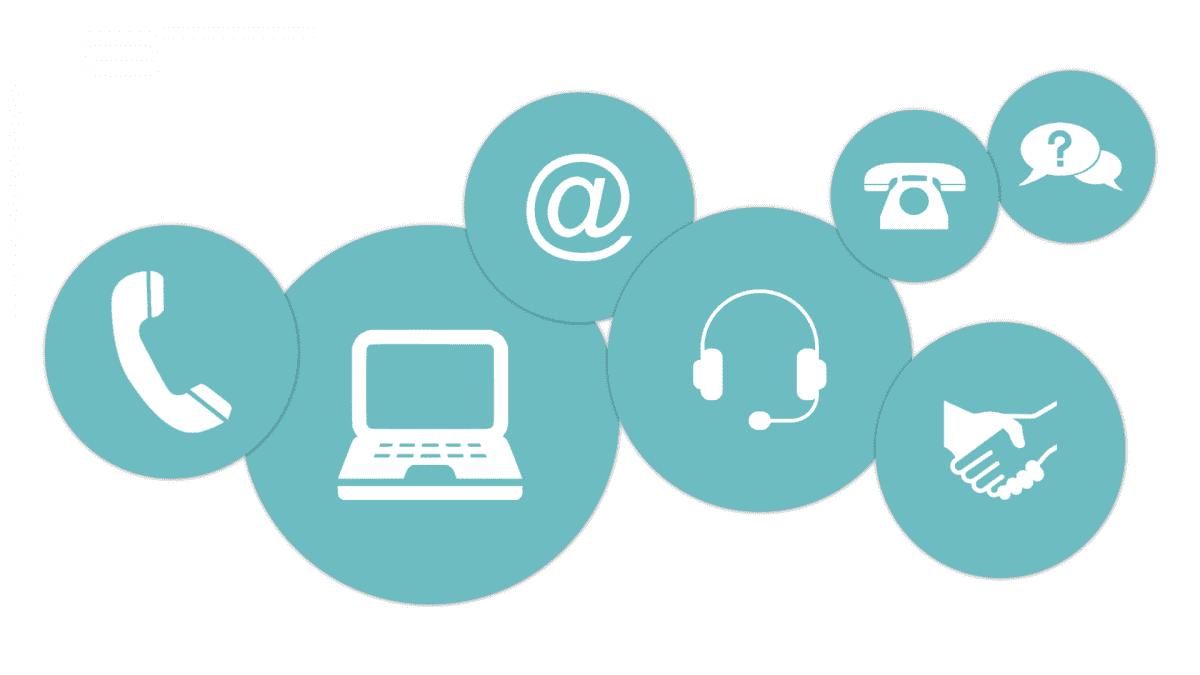
When it comes to the world of logistics management, understanding the nuances between shipping vs delivery is crucial. These two terms are often used interchangeably, but they have distinct meanings and contexts. Today, we’re examining the differences between shipping and delivery and why understanding these differences are vital for logistics.
Shipping and Delivery Aren’t the Same Thing
Shipping refers to the process of physically transporting products purchased online from a store to the customer’s delivery destination. It involves all the necessary steps, such as processing, packaging, and dispatching, to ensure that the items are ready for transit.
On the other hand, delivery is the final stage of the supply chain process. It occurs after the shipping process, where a shipment is moved from a transportation hub to the customer’s doorstep. Unlike shipping, which focuses on the preparation and dispatching of items, delivery centers around the transportation of larger items like electronics and furniture. It involves moving goods from a warehouse or distribution center to the customer’s specified address.
Why It’s Important to Understand the Differences
Now you might be wondering, why is it so important to distinguish between shipping vs delivery? While the terms may seem similar, they play different roles in the overall customer experience. As a logistics manager, understanding the differences ensures efficient operations and provides a seamless journey for your customers.
Clear communication and accurate expectations are the foundation of excellent customer service. When those logistics managers know the differences between shipping and delivery, they can set realistic timelines, manage customer expectations, and reduce any potential confusion or frustration. It better equips them to troubleshoot issues quickly, should they arise during the shipping or delivery process.
An Overview of Logistics Management
Logistics management is the heart of shipping and delivery. As a logistics manager, your role is to coordinate the intricate web of activities that ensure the smooth flow of goods from the point of origin to the final destination. This involves many tasks, including inventory management, transportation planning, warehousing, and order fulfillment.
By gaining a comprehensive understanding of shipping and delivery, you can optimize logistics operations, streamline processes, and enhance overall efficiency. This knowledge allows you to make informed decisions, allocate resources effectively, and improve customer satisfaction. With efficient logistics management, you can stay ahead in the competitive marketplace and deliver exceptional experiences to your customers.
Key Differences Between Shipping vs Delivery

Conceptual Differences
When it comes to conceptual differences, shipping, and delivery occupy distinct roles within the logistics landscape.
- Shipping: At its core, shipping refers to the process of transporting goods from one location to another. It encompasses the various stages involved in preparing, packaging, and dispatching items to ensure their safe transit. Shipping focuses on the logistical aspects of moving products, often involving carriers, freight forwarders, and shipping agents who handle the intricate details of transportation.
- Delivery: In contrast, delivery centers around the act of transferring goods to their final recipients or destinations. It’s the crucial last leg of the supply chain process, where goods make their way from a transportation hub to the customer’s doorstep. Delivery places emphasis on ensuring that the right products are delivered promptly and in optimal condition, typically through the efforts of courier services or a company’s dedicated delivery fleet.
Timeframe
The timeframe is another important aspect that distinguishes shipping from delivery.
- Shipping: Shipping encompasses the entire process from the initiation of transportation to the arrival of goods at a transit hub or port. It involves tasks such as processing orders, packaging items, arranging for transportation, and dispatching the goods for transit. The shipping timeframe starts from the moment the order is prepared for shipment and continues until the goods reach the designated transit hub or port.
- Delivery: On the other hand, delivery focuses on the final stage of transportation. It involves the movement of goods from the transit hub or port to the recipient’s location. Once the goods have reached the transit hub or port, the delivery process begins, ensuring that the items are transported safely and efficiently to their ultimate destination—the customer’s doorstep. The delivery timeframe starts from the moment the goods leave the transit hub or port and concludes when they are successfully delivered to the recipient.
Parties Involved
The involvement of different parties is another key distinction between shipping and delivery. Let’s explore the specific roles of each party:
- Shipping: The shipping process requires the collaboration of various entities responsible for handling the logistics of transporting goods. These parties may include carriers, freight forwarders, and shipping agents. Carriers are responsible for physically transporting the goods from the point of origin to the designated transit hub or port. Freight forwarders play a crucial role in coordinating the logistics and documentation involved in the shipping process. Shipping agents act as intermediaries between the shipper and the carrier, facilitating communication and ensuring smooth operations.
- Delivery: In contrast, the delivery process primarily revolves around the carrier responsible for the last-mile delivery. This is often a courier service or the company’s dedicated delivery fleet. The carrier takes charge of transporting the goods from the transit hub or port to the final destination—the customer’s address. They ensure that the goods are delivered safely and efficiently, often providing services such as tracking updates and delivery confirmation.
Documentation and Tracking
Documentation and tracking are very important in both the shipping and delivery processes.
- Shipping: The shipping process entails extensive documentation to ensure legal compliance and enable effective tracking of shipments. This documentation includes required paperwork like bills of lading, customs forms, and shipping manifests. Bills of lading serve as contracts between the shipper and the carrier, outlining details of the goods being shipped and the terms of transportation. Customs forms provide the necessary information for customs clearance when shipping goods across international borders. Shipping manifests provide an overview of the goods being transported, including their origin, destination, and quantity. This comprehensive documentation ensures that shipments comply with regulatory requirements and enables accurate tracking throughout the shipping journey.
- Delivery: In the delivery phase, real-time tracking and delivery confirmation takes precedence. The emphasis is on providing visibility to both logistics managers and recipients regarding the progress and status of the delivery. Real-time tracking systems allow logistics managers to monitor the movement of goods, ensuring they are on the right path and progressing according to schedule. Delivery confirmation provides reassurance to logistics managers and recipients alike, confirming that the goods have been successfully delivered to the intended recipient. This tracking and confirmation process enhances transparency, enables proactive communication, and ensures a smooth and reliable delivery experience.
Scope of Responsibility
The scope of responsibility differs between shipping vs delivery, with each stage focusing on distinct aspects of the logistics process.
- Shipping: The shipping process entails managing the transportation of goods from the point of origin to the designated transit hub. It encompasses a range of responsibilities, including selecting carriers, coordinating routes, and optimizing logistics operations. Logistics managers involved in shipping are responsible for choosing the most suitable carriers based on factors like cost, reliability, and service level agreements. They coordinate the transportation logistics, ensuring that the goods are routed efficiently and in compliance with regulations. They also strive to optimize the overall logistics operations to minimize costs and maximize efficiency.
- Delivery: The delivery process focuses on the safe and timely transfer of goods from the transportation hub to the customer’s address. This stage places a strong emphasis on customer satisfaction. Logistics managers involved in delivery ensure that the goods are handled with care during last-mile transportation. They prioritize timely deliveries, striving to meet or exceed the customer’s expectations. Delivery logistics managers coordinate routes, allocate resources, and manage the delivery fleet or engage with external courier services. Their primary goal is to ensure that the goods are delivered securely and promptly, fostering a positive customer experience.
Importance for Logistics Managers
Operational Efficiency
Operational efficiency is a critical goal for logistics managers, and understanding the differences between shipping vs delivery plays a crucial role in achieving it.
- Streamlining Shipping Processes: Logistics managers can better identify bottlenecks, eliminate redundancies, and optimize the various stages involved in preparing, packaging, and dispatching goods. This boosts efficiency, reduces costs, and accelerates turnaround times.
- Optimizing Carrier Selection: They can assess the specific requirements of each shipment, such as size, weight, destination, and urgency. With this knowledge, they can choose the most suitable carriers based on factors such as cost-effectiveness, reliability, and transit times. This optimization results in improved service levels, reduced transit times, and enhanced customer satisfaction.
- Reducing Transit Times: Logistics managers can identify opportunities to reduce transit times. They can evaluate transportation routes, analyze potential congestion points, and implement strategies to expedite deliveries. By reducing transit times, logistics managers can meet tight deadlines, improve order fulfillment speed, and exceed customer expectations.
- Effective Management of Delivery Operations: Effective management of delivery operations is crucial for ensuring prompt and accurate last-mile deliveries. By understanding the nuances of delivery, logistics managers can implement efficient routing systems, allocate resources strategically, and monitor delivery progress in real time. These practices enable timely deliveries, minimize delivery errors, and enhance overall customer satisfaction.

Cost Management
Cost management is a crucial aspect of logistics operations, and differentiating between shipping vs delivery plays a significant role in optimizing costs.
- Identifying Cost-Saving Opportunities: By analyzing the specific requirements of each shipment, they can determine the most cost-effective shipping methods, packaging solutions, and transportation modes. This knowledge allows them to optimize operations, reduce unnecessary expenses, and maximize cost efficiency.
- Negotiating Favorable Shipping Contracts: Logistics managers can negotiate favorable shipping contracts with carriers and freight forwarders. By understanding the specific needs of their shipments, they can use this knowledge during contract negotiations to secure competitive pricing, favorable terms, and value-added services. This strategic approach to contract negotiation contributes to overall cost savings and improved financial performance.
- Optimizing Delivery Routes: By understanding the final leg of transportation, they can evaluate route options, consider factors such as traffic patterns, distance, and delivery density, and design efficient routes that minimize mileage and fuel consumption. Optimized delivery routes result in reduced operational costs, increased fuel efficiency, and shorter delivery times.
- Minimizing Expenses and Customer Complaints: Effective management of delivery operations minimizes expenses related to failed deliveries, returns, and customer complaints. By understanding the intricacies of delivery, logistics managers can implement robust quality control measures, ensure accurate order fulfillment, and enhance the reliability of last-mile deliveries. This leads to a reduction in costs associated with returns, re-deliveries, and customer dissatisfaction, ultimately improving cost management and preserving profitability.
Customer Experience
The customer experience is a top priority for logistics managers.
- Providing Accurate Delivery Estimates: By understanding the timeframes associated with each stage, they can communicate realistic timelines and set appropriate expectations. Accurate delivery estimates instill confidence in customers, allowing them to be well-informed and prepared for the arrival of their orders.
- Proactive Tracking Updates and Timely Notifications: By leveraging tracking technologies and real-time monitoring systems, logistics managers can keep customers informed about the status and progress of their shipments. Proactive notifications about any delays or changes in delivery schedules demonstrate transparency, build trust, and empower customers with the information they need.
- Enhancing the Delivery Process: A seamless delivery process is essential for an exceptional customer experience. Logistics managers can ensure that the final leg of the journey is smooth and hassle-free. They can focus on aspects such as careful handling, efficient routing, and on-time deliveries. A seamless delivery process leads to customer satisfaction, increased loyalty, and positive word-of-mouth, enhancing the overall brand reputation.
- Addressing Customer Concerns and Queries: By understanding the intricacies of the logistics processes, they can provide accurate and detailed responses to customer inquiries. This level of expertise builds trust, reduces customer frustration, and fosters a positive customer experience.

Final Thoughts
It’s critical for logistics managers to grasp the key differences between shipping vs delivery. Shipping refers to the process of physically transporting products from a store to the customer’s delivery destination, while delivery is the final stage of the supply chain process, moving the shipment from a transportation hub to the customer’s doorstep. These distinctions include conceptual differences, timeframe variations, parties involved, documentation and tracking requirements, and scope of responsibility.
Understanding the differences between shipping and delivery holds immense significance for logistics managers. This knowledge empowers them to improve operational efficiency, cost management, and customer experience in the logistics industry.
Check Out Elite EXTRA for All Your Delivery Needs
Discover how Elite EXTRA’s last mile logistics software can revolutionize your delivery management. With optimized route planning, real-time driver tracking, and customer ETA notifications, our comprehensive solution streamlines operations and enhances customer satisfaction. With over 325,000 users worldwide and a 98% client retention rate, Elite EXTRA is a trusted industry leader. Our customizable software is accessible as a service (SaaS) from anywhere, supported by in-house training and support. Contact Elite EXTRA today to learn more about our last mile logistics solutions!
Sources
https://www.forbes.com/sites/garthfriesen/
https://www.dripcapital.com/en-us/resources/blog/how-to-choose-freight-forwarder
https://money.usnews.com/money/personal-finance/spending/articles/the-cheapest-ways-to-ship-packages
https://www.packaging-gateway.com/features/top-ten-packaging-companies-to-watch-in-2023/







